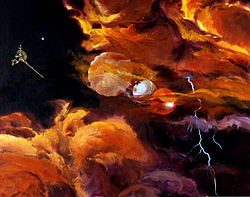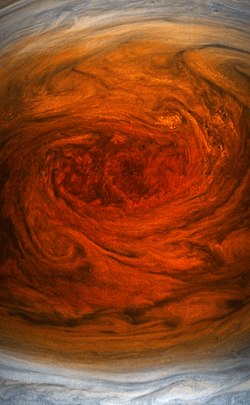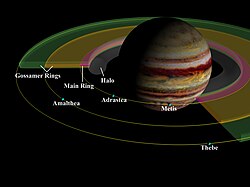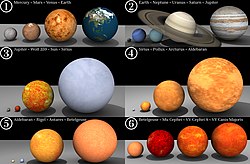PIA02863 - Jupiter surface motion animation
"The first color movie of Jupiter from NASA's Cassini spacecraft shows what it would look like to peel the entire globe of Jupiter, stretch it out on a wall into the form of a rectangular map, and watch its atmosphere evolve with time.
The brief movie clip spans 24 Jupiter rotations between Oct. 31 and Nov. 9, 2000.
Various patterns of motion are apparent all across Jupiter at the cloudtop level seen here. The Great Red Spot shows its counterclockwise rotation, and the uneven distribution of its high haze is obvious. To the east (right) of the Red Spot, oval storms, like ball bearings, roll over and pass each other. Horizontal bands adjacent to each other move at different rates. Strings of small storms rotate around northern-hemisphere ovals. The large grayish-blue "hot spots' at the northern edge of the white Equatorial Zone change over the course of time as they march eastward across the planet. Ovals in the north rotate counter to those in the south. Small, very bright features appear quickly and randomly in turbulent regions, candidates for lightning storms.
The clip consists of 14 unevenly spaced timesteps, each a true color cylindrical projection of the complete circumference of Jupiter, from 60 degrees south to 60 degrees north. The maps are made by first assembling mosaics of six images taken by Cassini's narrow-angle camera in the same spectral filter over the course of one Jupiter rotation and, consequently, covering the whole planet. Three such global maps -- in red, green and blue filters -- are combined to make one color map showing Jupiter during one Jovian rotation. Fourteen such maps, spanning 24 Jovian rotations at uneven time intervals comprise the movie. The maps were reduced in scale by a factor of two to make them accessible on the Internet at reasonable rates. Occasional appearances of Io, Europa, and their shadows have not been removed.
The smallest visible features at the equator are about 600 kilometers (about 370 miles) across. In a map of this nature, the most extreme northern and southern latitudes are unnaturally stretched out.
Cassini is a cooperative project of NASA, the European Space Agency and the Italian Space Agency. The Jet Propulsion Laboratory, a division of the California Institute of Technology in Pasadena, manages the Cassini mission for NASA's Office of Space Science, Washington, D.C.Relevante Bilder
Relevante Artikel
Jupiter (Planet)Jupiter ist mit einem Äquatordurchmesser von 142.984 Kilometern der größte Planet des Sonnensystems. Mit einer durchschnittlichen Entfernung von 778 Millionen Kilometern ist er von der Sonne aus gesehen der fünfte Planet. Er ist nach dem römischen Hauptgott Jupiter benannt. .. weiterlesen
Großer Roter FleckDer Große Rote Fleck ist ein auffälliger und langlebiger Sturm in Jupiters Atmosphäre. Meteorologisch gesehen ist er ein Hochdrucksystem auf der Südhalbkugel des Planeten. Dieses System erzeugt einen antizyklonalen Sturm, welcher der größte im Sonnensystem ist. Er befindet sich in der südlichen Tropenzone und ist etwa eineinhalb mal so breit wie der Durchmesser der Erde. Die Windgeschwindigkeiten betragen bis zu 680 km/h. Erste Beobachtungen eines Flecks auf Jupiter stammen aus der Zeit von 1665 bis 1713. Es ist unklar, ob es sich damals um denselben Sturm handelte wie der seit dem 19. Jahrhundert beobachtete Große Rote Fleck. Sollte dies zutreffen, dann existiert er seit über 350 Jahren. Erst 1831 wurde er das nächste Mal von Samuel Heinrich Schwabe beobachtet, und zwischen diesem Zeitpunkt und 1878, als die kontinuierliche Beobachtung begann, wurden 60 Beobachtungen aufgezeichnet. Ab den 1970er Jahren bekam Jupiter Besuch von etlichen Raumsonden wie Voyager, Galileo, Cassini und Juno, die detaillierte Aufnahmen und weitere Messungen des Sturms durchführen konnten. .. weiterlesen






































